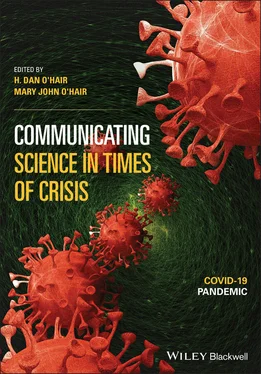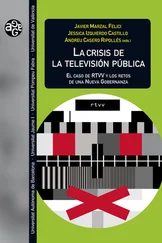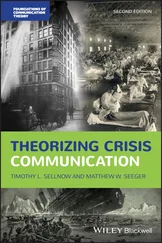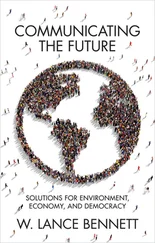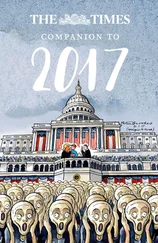Such narrative configurations or templates are stoked by routine and evolved cognitive biases that enhance narrative fidelity. For example, there is some experimental evidence for a Sarrazin effect, in which the greater the availability or accessibility of extreme or ordinarily implausible explanatory options, the more people tend to move toward conspiratorial accounts (Raab et al., 2013). Another conjecture is that conspiratorial thinking is reinforced by a tendency to seek “us-versus-them” identities (Leone et al., 2020). A third cognitive bias may be the tendency to attribute or seek intention (Brotherton & French, 2015) or agency (Douglas et al., 2016) underlying otherwise potentially accidental or coincidental events, which may also take the form of a tendency of people to presume greater explanatory depth, precision, and coherence than actually exists (Rozenblit & Keil, 2002). There is also evidence for the proportionality bias, which predicts that extreme events cannot be the product of nonextreme causes, and thus, vast disruptive and unusual events stimulate human tendencies to attribute agency, to concoct narratives of actors pulling levers behind the curtain, simply, for example, because “in medical conspiracy theories, unfortunate things (such as, say, the outbreak of some virus) cannot just happen without a purpose” (Andrade, 2020, p. 5). Furthermore, “the more horrendous the consequences of an event, the more brutal and inhuman are those who caused it” (Madisson, 2014, p. 297). In short, narratives with anthropomorphized actors can provide coherence to the unimaginable incomprehensibility of random chance and evolutionary biology.
An iconic-continuous originator of danger is depicted, to a greater or lesser extent, in all conspiracy theories, … where it is expressed in approximately this manner: There must be dark forces behind the catastrophe or that there is a terrible conspiracy behind the catastrophe. The enemy inheres as an essential figure within the very concept of conspiracy .
(Madisson, 2014, pp. 282–283)
Given that conspiracy theories require an assumption that things are secret or being hidden, it follows that belief in invisible things (e.g., angels, devil, ghosts) is associated with conspiratorial thinking (Goertzel, 1994; Oliver & Wood, 2014). An analysis of mediated beliefs in paranormal phenomena (i.e., ghost stories) suggest the criteria of versatility (“flexibility to represent a cross-section of moods, locations, or themes that span diverse literary genres”), adaptability (“the ability to evolve over time with changes in society”), participatory nature (the facility proffered by the narrative to invite individual and social activity, such as through tours and amateur clubs), universality (of interest to diverse populations, cultures, world views, and belief systems), and scalability (“engage people individually and collectively, via meme-like ‘contagious’ processes” (Hill et al., 2019, p. 6)). Most conspiracy theories presuppose a non-transparency, such as a cover-up or manipulation of information, which protects the publicity or the official narrative and account of the event, which, of course, implies a group of conspirators who sustain such non-transparency (Raab et al., 2013).
The invisibility underlying conspiracies is also one of the features that makes them resistant to opposing accounts, much less falsification—counterarguments and counterevidence not only do not take into account what is hidden but are misleading products of the cabal that seeks to remain hidden. Of course, Big Pharma has a profit motive to sustain science that supports vaccines, and, of course, China wants everyone to believe the science that 5G will bring only convenience and efficiency to our communications, rather than activating population control through its bioengineered virus. People who only pay attention to “the evidence” are simply not woke to what is happening in secret.
Thus, part of the challenge of identifying and managing conspiracy theories is their paradoxical nature in regard to signification, representation, and rhetorical usage (Madisson, 2014). For example, conspiracy theories represent “a paradoxical duality” in that they are constructed to appear testable like any other set of theoretical hypotheses, yet “on the other hand, the actual usages of the concept of a ‘conspiracy theory’ often carry the implication that even its possible truth is excluded” (Bjerg & Presskorn-Thygesen, 2017, p. 141)—that is, they claim exemption from direct test or counterfactual falsification by virtue of the conspiratorial influences at work. This is consistent with a common theme that such theories depend on “self-reported access to hidden, secret, or otherwise inaccessible information” (Shahsavari et al., 2020, p. 16). Thus, they appear to claim the traditional narrative as false or deceptive (i.e., “fake”), while simultaneously referring to evidence in support of their claims and excluding the prospect of falsifying their own truth-status. Furthermore, the need to avoid narrative coherence or dissonance, or “the structural breakdown of a given narrative because of emotional, moral, thematic, or conceptual contradictions within the story itself” is defensively employed and deployed as a barrier to incorporating corrective information (Malena-Chan, 2019, p. 160). Finally, some fake news that is the product of conspiracy theory is generated such that the news shared may itself be valid or factual, and what is fake is the source and intent of the news. For example, some of the Russian Internet Research Agency’s information warfare objectives “were to exacerbate division and sow discord among the American public” yet were perpetrated under the guise of a false cultivated persona of an ordinary citizen Jenna Abrams (Xia et al., 2019, p. 1647).
Narrative Theory and Health Communication
The narrative immersion model (Shaffer & Zikmund-Fisher, 2013) extends narrative theory into health communication specifically. It proposes five broad purposes served by narratives: to persuade (e.g., alter behavioral intentions), to influence (alter behaviors), to inform (increase knowledge or decrease uncertainty), to comfort (reduce anxiety) or to engage (transport, immerse, entertain, etc.). These purposes are sought by three types of health-related narrative types: outcome narratives (i.e., the mental or physical health outcomes or effects associated with a health-related factor such as a disease or a treatment), experiential narratives (i.e., the phenomenological symptoms, progression, and senses resulting from a disease or treatment), and process narratives that explain how a person makes decisions relevant to the disease or treatment (Shaffer & Zikmund-Fisher, 2013). The model predicts different effects with different narratives, which would also suggest ways in which narratives could be manipulated to be most relevant at various stages of a disease progression or pandemic history. The model proposes that narrative realism, source credibility ( ethos ), and entertainment value will influence the extent of a person’s immersion in a given narrative (Shaffer et al., 2018).
Among the antecedents and consequences of such misinformation is a general distrust of institutions and information sources. In one survey of US adults regarding the 2020 COVID-19 pandemic, 38% believe that government has handled the pandemic issue “badly,” 34% are not confident in the health authorities’ ability to respond, and 41% report not having enough information on how to respond (Nguyen, 2020). Of over 27,000 readers responding to a Pharmaceutical Technology poll, over half (55%) lacked confidence that the World Health Organization or national healthcare institutions could effectively manage the outbreak (Nawrat, 2020). A Pew survey (Mitchell & Oliphant, 2020) of almost 10,000 US adults in early June 2020 indicated that only two-thirds believed that the Centers for Disease Control and Prevention (CDC) and similar health organizations got their facts about COVID-19 correct “almost all” or “most” of the time, whereas a majority distrusted President Trump and his administration for such information, believing they got such information right only “some of the time” (29%) or “hardly ever” (36%). Trust in government, public authorities, and information sources; worry, fear, and knowledge about the disease; and amount of media exposure and information-seeking behaviors tend to promote compliance with public health recommended infection prevention behaviors (Lin et al., 2014), whereas distrust in government is predictive of belief in conspiracy theories (Freeman et al., 2020a; Imhoff & Lamberty, 2018), which in turn decrease the likelihood of engaging in valid health protective behaviors (Patev et al., 2019). “In polarized, low-trust environments political actors more frequently act as sources of online disinformation. In these countries, political actors seem to fuel polarized debates by attacking political enemies” (Humprecht, 2019, p. 1984).
Читать дальше
